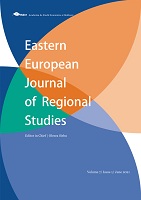From Internal to International Migration in Romania – Continuity and Spatial Differentiation
From Internal to International Migration in Romania – Continuity and Spatial Differentiation
Author(s): Ionel Muntele, Raluca Ioana Horea-ȘerbanSubject(s): WW II and following years (1940 - 1949), Post-War period (1950 - 1989), History of Communism, Migration Studies
Published by: Center for Studies in European Integration, Academy of Economic Studies of Moldova
Keywords: mobility transition; territorial disparities; migratory system; changing trends; predictors; Romania;
Summary/Abstract: The study proposes a set of analyses on the evolution of the migration balance of Romania’s population over a wide time interval, fully covering the period dominated by the communist regime (1948-1989) and the last three decades marked by the transition to a market economy. The aim is to differentiate the typology of the time and space distribution of the mentioned indicator and to test a set of explanatory factors, for each of the two distinct periods. The typological and factor analyses applied led to results that largely confirm the hypothesis of a continuity between the massive internal migration during the communist regime and the more complex migration in recent decades. At the same time, the profound changes in the incidence of certain explanatory factors certify a complete restructuring of the migration system in Romania after 1990. The massive migration from rural to urban areas, brought about by positional or socio-economic factors, was gradually replaced after the fall of the communist regime by a strong labour emigration, an effect of deindustrialization. The stimulation of the periurbanization process, by changing the way of life, introduced new variables in the functioning of the migration system, in keeping with the specific evolutions of the contemporary era.
Journal: Eastern European Journal for Regional Studies (EEJRS)
- Issue Year: 7/2021
- Issue No: 2
- Page Range: 5-26
- Page Count: 22
- Language: English

